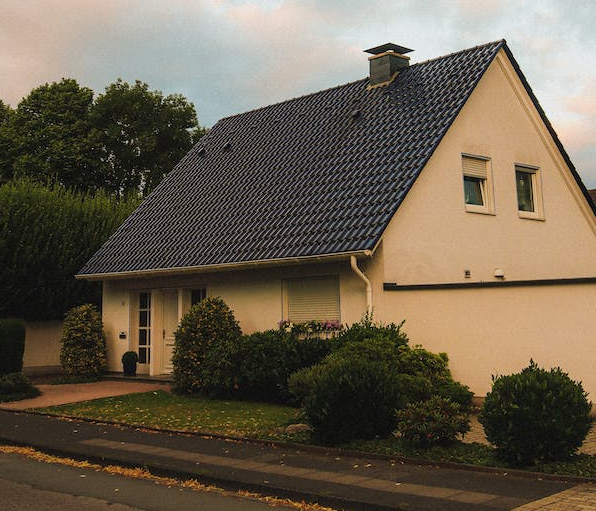Tiny Homes: A Compact Solution to Modern Living Challenges

tiny homes
Introduction
The “tiny home” movement has taken the world by storm, with many people opting for minimalistic living in compact spaces. But what drives this trend, and is it a sustainable choice for everyone? This article delves into the world of tiny homes, exploring their benefits, challenges, and the practicalities of adopting such a lifestyle.
Also Read:- Tiny Living, Big Impact: The Rise of Micro Home
1. The Allure of Tiny Homes
What’s the point of living in a tiny home?
For many, tiny homes represent freedom – freedom from hefty mortgages, clutter, and the societal pressure to own large properties. They promote a simpler way of life, encouraging residents to prioritize experiences over possessions. Moreover, they offer an eco-friendly living option, often incorporating sustainable materials and energy-efficient appliances.
2. Building Your Tiny Sanctuary
How to build a small cabin/tiny home for cheap and easily?
Building a tiny home can be cost-effective if approached correctly:
- Planning: Start with a clear design, considering your essential needs. Utilize free design software or consult with tiny home enthusiasts for guidance.
- Materials: Salvaged materials, such as reclaimed wood or metal, can significantly reduce costs. Check local listings or demolition sites for deals.
- DIY: While some tasks might require professionals, many aspects of tiny home construction can be DIY, saving labor costs.
3. The Tiny Home Movement: A Boon or Bane?
Do you believe the “tiny home” movement is good or bad?
The tiny home movement has both proponents and critics. On the positive side, it promotes sustainability, reduces carbon footprints, and encourages a decluttered lifestyle. However, critics argue that it might not be a viable long-term solution for families or those requiring more space for their activities.
4. Location, Location, Location
Can you put a tiny home on any property?
While the idea of placing a tiny home anywhere is appealing, there are legal and practical considerations. Zoning laws, building codes, and property rights can vary, so it’s essential to research local regulations. Some areas have embraced the tiny home trend, offering designated communities or relaxed restrictions, while others remain stringent.
5. The Tiny Home Experience
What’s your opinion about living in a tiny house?
Living in a tiny home is a unique experience that might not suit everyone. It requires adaptability, creativity in utilizing space, and a willingness to downsize possessions. For those who value minimalism and sustainability, it can be incredibly rewarding. However, it might pose challenges for larger families or those accustomed to spacious living.
6. Potential Pitfalls of Tiny Living
Why are tiny homes a bad idea?
While tiny homes offer numerous benefits, they also come with drawbacks:
- Limited Space: This can be challenging for families or those with hobbies requiring ample space.
- Mobility Issues: Not all tiny homes are easily movable, which can be a limitation for those seeking a nomadic lifestyle.
- Resale Value: The niche market for tiny homes might make reselling challenging.
- Legal Restrictions: As mentioned, not all areas are tiny-home friendly, leading to potential legal hurdles.
Conclusion
Tiny homes present an intriguing solution to modern living challenges, promoting sustainability and minimalism. However, like all housing options, they come with their set of pros and cons. Those considering this lifestyle should weigh the benefits against the potential challenges, ensuring it aligns with their long-term goals and preferences.
Frequently Asked Questions (FAQs) About Tiny Homes
1. What is a tiny home?
A tiny home is a compact living space, often ranging from 100 to 400 square feet, designed to provide all the essentials of a full-sized house in a significantly reduced footprint. They can be stationary or built on wheels for mobility.
2. Why are people choosing tiny homes?
People are drawn to tiny homes for various reasons, including financial savings, environmental concerns, a desire for minimalistic living, or the flexibility of a mobile lifestyle.
3. Are tiny homes legal?
The legality of tiny homes varies by location. Some cities and towns have embraced the tiny home movement, adjusting zoning laws and building codes to accommodate them. However, others have restrictions that can make it challenging to legally live in a tiny home. It’s essential to check local regulations.
4. How much does a tiny home cost?
The cost can vary widely based on size, materials, and amenities. While some DIY tiny homes can be built for as little as $10,000, more luxurious or custom-designed models can exceed $100,000.
5. Can I build a tiny home on my property?
This depends on local zoning laws and building codes. Some areas allow tiny homes as “accessory dwelling units” on existing properties, while others may have restrictions. Always check with local authorities before building.
6. Are tiny homes safe?
When built to standard, tiny homes are as safe as traditional homes. However, because of their size, it’s crucial to consider factors like weight distribution (for mobile homes), secure anchoring, and safe installation of utilities.
7. How do utilities work in a tiny home?
Tiny homes can connect to traditional utilities, or they can be set up for off-grid living with features like solar panels, composting toilets, and rainwater collection systems.
8. Can a family live in a tiny home?
While many tiny homes are occupied by individuals or couples, some families choose to live in them. Creative design solutions, like lofted sleeping areas and multi-use furniture, can make it feasible for families to live in a compact space.
9. Do tiny homes depreciate in value?
Like traditional homes, the value of a tiny home can depend on factors like location, maintenance, and market demand. However, tiny homes on wheels might depreciate similarly to vehicles over time.
10. How long do tiny homes last?
With proper maintenance, a well-built tiny home can last as long as a traditional home. The lifespan can be influenced by materials used, frequency of movement (for mobile homes), and exposure to elements.








